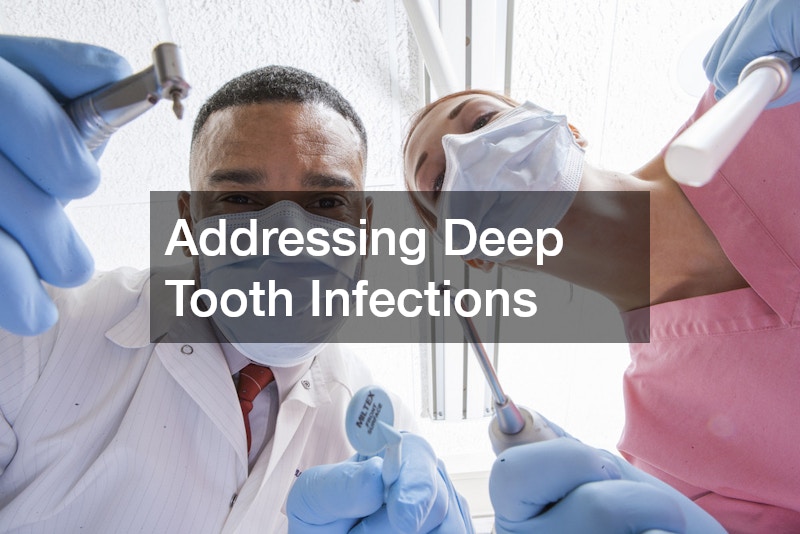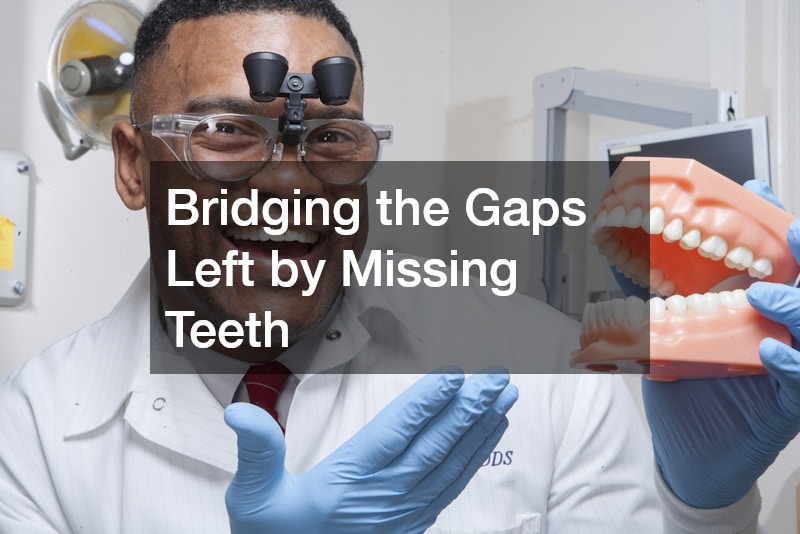Understanding the full spectrum of offerings at your local dentist can make all the difference in how you approach oral care. From preventive measures to complex restorations, a visit to the dentist is more than just a routine checkup. It’s about safeguarding your health, ensuring your smile is bright, and addressing issues before they escalate. Whether you’re new to an area or exploring options to enhance your oral health, knowing what’s available can help you make informed choices. This article will guide you through some of the most essential and specialized services provided at a dentist’s office.
What to Expect When Visiting a Modern Practice
When you first walk into a dental office, you’ll likely be greeted by front desk staff who help schedule your appointments and process insurance paperwork. But beyond the administrative support, the true value lies in the services offered within the clinic’s walls. Today’s dental offices combine comfort, technology, and care into one comprehensive experience. You’ll find everything from routine exams and cleanings to more advanced treatments like crowns and oral surgeries. A major focus is also placed on diagnostic dental services, which are the foundation of accurate treatment planning. These include digital X-rays, 3D scans, and oral cancer screenings, helping dentists detect problems early and provide timely solutions.
Another benefit of a full-service dental office is the convenience of having multiple specialties under one roof. This includes access to hygienists, general practitioners, and specialists such as oral surgeons or periodontists without the need for external referrals. The use of centralized diagnostic dental services ensures continuity of care and better record-keeping, making the entire patient experience more seamless. Patients can feel more confident knowing they’re receiving coordinated treatment plans based on real-time diagnostics and personalized evaluations. With these advances, dental visits become more efficient, comfortable, and tailored to individual needs.
Enhancing Smiles Through Aesthetic Options

For those seeking to improve the look of their teeth, working with a cosmetic dentist can provide remarkable transformations. Whether you’re dealing with stained, chipped, or misaligned teeth, cosmetic procedures are designed to restore both beauty and function. Veneers, dental bonding, and contouring are commonly offered, along with more intensive services like full smile makeovers. What makes these procedures effective is their customization. Every patient has unique needs and goals, and a cosmetic dentist will work closely with you to craft a tailored plan. Underpinning these enhancements are diagnostic dental services, which help determine the health of the underlying teeth and gums before any cosmetic changes are made.
Cosmetic enhancements often extend beyond appearance—they can dramatically improve self-esteem and social interactions. Many patients report a boost in confidence after addressing long-standing insecurities about their smile. From job interviews to social events, a radiant smile can open doors. In addition, cosmetic dentists often incorporate the latest technologies, such as digital smile previews or laser treatments, to achieve optimal results. These innovations rely on diagnostic dental services to ensure each step of the process is accurately mapped out, enhancing both safety and aesthetics. Investing in your smile is not just a visual upgrade—it’s a lifestyle enhancement.
Special Care for the Youngest Smiles
Children’s oral health is a vital component of lifelong wellness. A pediatric dentist specializes in the unique dental needs of infants, toddlers, and adolescents. These professionals are trained to manage the behavioral aspects of young patients while providing a full range of care, including cleanings, fluoride treatments, sealants, and cavity fillings. Visiting a pediatric dentist early in life can foster a positive attitude toward oral hygiene and reduce anxiety around dental visits. The use of diagnostic dental services like X-rays and bite assessments helps identify issues such as misaligned teeth or jaw development concerns, allowing for early intervention and more effective treatments later on.
The environment of a pediatric dental practice is also tailored to create a child-friendly experience. From colorful décor to games in the waiting room, every detail is designed to reduce fear and build trust. Education is a major component—pediatric dentists and hygienists teach children how to brush and floss properly, explain what foods to avoid, and help parents guide their child’s oral habits. Diagnostic services play a key role in tracking growth patterns, which is crucial during early development. These visits not only catch problems early but also lay the foundation for a lifetime of healthy dental choices.
Keeping Your Mouth Fresh and Healthy

One of the most basic yet essential procedures at any dental clinic is teeth cleaning. Performed by a dental hygienist, this service removes plaque, tartar, and stains that regular brushing can’t eliminate. It also serves as a preventive step against gum disease and tooth decay. During a cleaning appointment, patients can expect scaling, polishing, and a fluoride rinse. What may seem routine is actually critical in maintaining oral health. Teeth cleanings are often accompanied by diagnostic services like periodontal charting and oral health screenings. These allow the dental team to monitor the health of your gums and recommend treatment if early signs of disease are found.
Beyond hygiene, teeth cleaning appointments provide an opportunity for early intervention and education. Your hygienist may notice minor issues such as sensitivity or gum inflammation that can be resolved before they become major problems. Professional cleanings also remove bacteria that contribute to systemic issues like heart disease and diabetes. Combined with diagnostic dental services, these visits allow your provider to create a personalized plan for long-term wellness. By staying consistent with routine cleanings, you not only protect your teeth but also support overall health.
Correcting Misalignments and Bite Issues
If your teeth are crooked, gapped, or your bite is misaligned, an orthodontist can help realign your smile. These specialists use braces, clear aligners, retainers, and other devices to gradually move teeth into their proper positions. Beyond aesthetics, orthodontic treatment can improve function, prevent jaw pain, and reduce the risk of future dental complications. The process typically starts with a consultation and thorough exam that includes the use of diagnostic services such as panoramic X-rays and bite simulations. These tools allow the orthodontist to create a precise treatment plan tailored to the individual’s needs and desired outcomes.
Orthodontic care is suitable for both children and adults, and modern treatment options are more discreet than ever. Clear aligners like Invisalign allow patients to straighten their teeth without the visibility of traditional braces. Treatment durations vary, but with consistent monitoring—backed by reliable diagnostic services—patients can expect excellent long-term results. Additionally, correcting bite issues can alleviate problems like TMJ, speech difficulties, and uneven tooth wear. Orthodontists don’t just improve smiles—they enhance functionality and prevent future oral health problems, making it a critical investment in your well-being.
Addressing Deep Tooth Infections

Sometimes, decay or injury can lead to a tooth infection that affects the pulp or nerve inside. When this happens, a root canal may be necessary to save the tooth. While the term often causes anxiety, modern root canal procedures are relatively painless and highly effective. The process involves removing the infected tissue, cleaning the interior canals, and sealing the space to prevent further infection. This procedure is supported by diagnostic services like thermal sensitivity tests and digital imaging, which help confirm the extent of the infection and guide the treatment strategy. Preserving the natural tooth whenever possible remains a top priority.
Root canal therapy also prevents the need for more extensive dental work in the future, such as extractions and implants. Many patients are surprised at how much pain relief they experience following treatment. Dentists may follow up with a crown to strengthen the tooth and restore its original function. Advances in tools and techniques, including rotary endodontics and improved anesthetics, have made root canals quicker and more comfortable than ever. Thanks to diagnostic dental services, providers can offer more targeted and effective care, ensuring that no area of infection goes unnoticed.
Solutions for Unexpected Dental Damage
From sports injuries to accidental falls, chipped or fractured teeth are common issues that require prompt attention. Fortunately, broken teeth repair can be performed using a variety of techniques depending on the severity of the damage. Options include bonding, crowns, or even veneers. The first step in any repair process is a comprehensive evaluation that includes diagnostic services. These diagnostics help assess the extent of the break, determine if the pulp is exposed, and guide the appropriate course of action to restore both function and appearance.
Timely repair is essential to prevent complications like infection, nerve exposure, or shifting teeth. Dentists may also assess surrounding structures to ensure the damage hasn’t affected neighboring teeth or gums. Some dental practices offer same-day crowns or bonding, allowing for faster recovery. Whether the damage is minor or severe, early use of diagnostic services helps protect oral health and avoid further issues. With proper care and quick intervention, most cases of dental trauma can be resolved efficiently and effectively.
Bridging the Gaps Left by Missing Teeth

Missing teeth not only affect appearance but also compromise your ability to chew and speak clearly. One effective solution is dental bridges, which span the gap where one or more teeth are missing. These structures typically consist of one or more false teeth anchored by crowns on adjacent natural teeth. A proper bridge can restore the function and symmetry of your smile. The planning stage involves impressions, bite assessments, and other diagnostic services to ensure the bridge fits comfortably and aligns correctly with your existing teeth. With the right care, dental bridges can last many years and significantly enhance your quality of life.
Beyond function, dental bridges can prevent the shifting of surrounding teeth, which often occurs when a gap is left untreated. This shifting can lead to bite misalignment and uneven wear on the teeth. In addition to stabilizing your bite, bridges help maintain facial structure by preventing bone loss in the jaw. With regular cleanings and checkups, a dental bridge can remain in excellent condition for many years. Diagnostic services ensure that the supporting teeth remain healthy and that the bridge remains properly seated and aligned.
Brightening Smiles for a Confident Look
Over time, teeth naturally lose their brightness due to food, drink, age, and lifestyle habits. Professional teeth whitening is a popular solution that can dramatically enhance your appearance. Unlike over-the-counter options, in-office whitening treatments are more effective and longer-lasting. They involve the application of professional-grade bleaching agents under controlled conditions. Before the whitening session begins, diagnostic services are used to check for cavities, gum disease, or other issues that could affect treatment. These assessments ensure that your teeth are healthy enough for whitening and that the results will be both safe and satisfying.
In-office whitening can deliver noticeable results in just one session, and many practices also offer take-home kits for maintenance. Patients love the boost in confidence that comes from a whiter smile. However, it’s important to note that whitening isn’t suitable for everyone, especially those with extensive dental restorations or untreated decay. By using diagnostic dental services before the procedure, dentists can tailor whitening solutions to individual needs and help patients achieve their brightest, healthiest smile safely.
Long-Term Replacement Options for Lost Teeth
For those who have lost one or more teeth, dental implants offer a permanent solution. These titanium posts are surgically inserted into the jawbone, where they act as artificial roots for crowns or dentures. Implants are highly durable and mimic the look and function of natural teeth. The process requires several stages, including imaging, placement, healing, and restoration. Diagnostic dental services play a crucial role in every phase, from evaluating bone density to monitoring post-surgical healing. With proper care, dental implants can last decades, making them one of the most reliable options for tooth replacement.
Patients appreciate the stability and natural feel of dental implants compared to other replacement options. They prevent bone deterioration, maintain facial contours, and eliminate the need for adhesives. The process may take several months from start to finish, but the long-term results are often well worth it. Diagnostic dental services allow for precise implant placement and help detect any signs of complications early in the healing process. With a high success rate and lasting impact on quality of life, dental implants are an outstanding choice for permanent tooth restoration.
A well-rounded dental practice offers more than just cleanings and fillings—it provides an array of treatments that support both oral and overall health. From preventive care to restorative and cosmetic procedures, each service plays a role in maintaining a confident, healthy smile. Most importantly, diagnostic dental services serve as the foundation for every treatment decision. Whether you’re managing a simple cavity or considering advanced restoration, knowing the options available at your dental office can help you make better choices. Regular visits and proactive care are essential steps toward lasting oral wellness.


